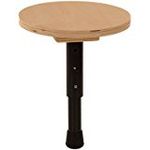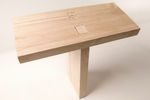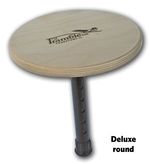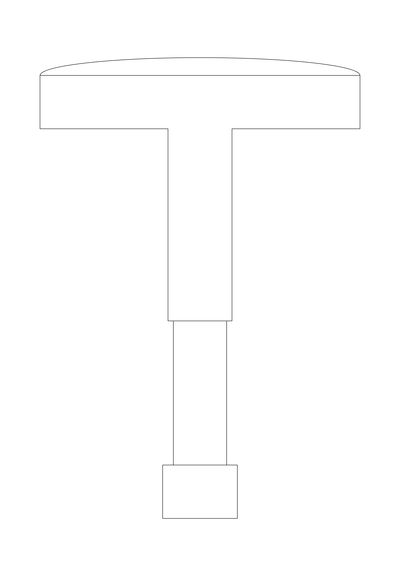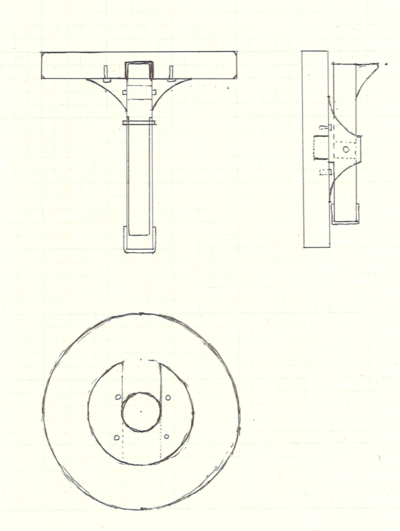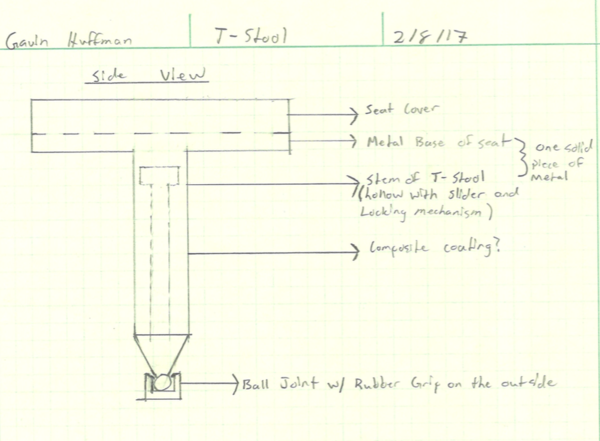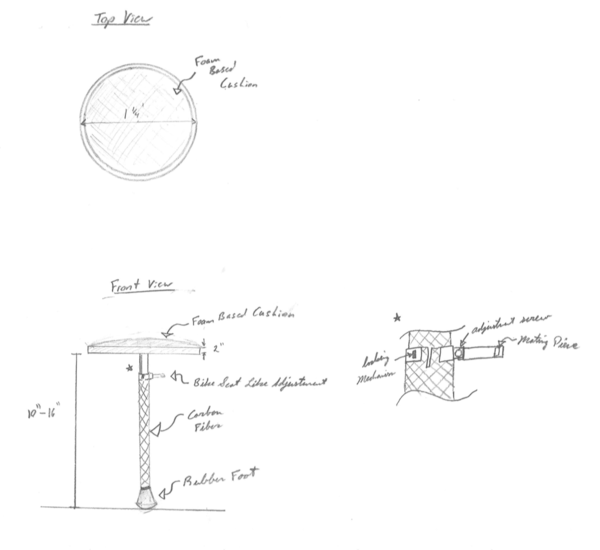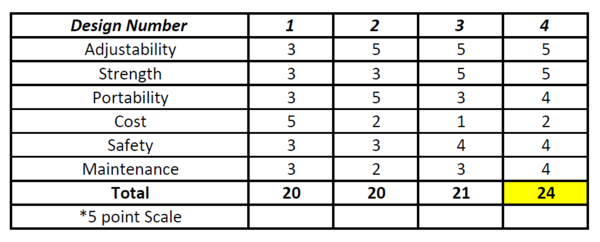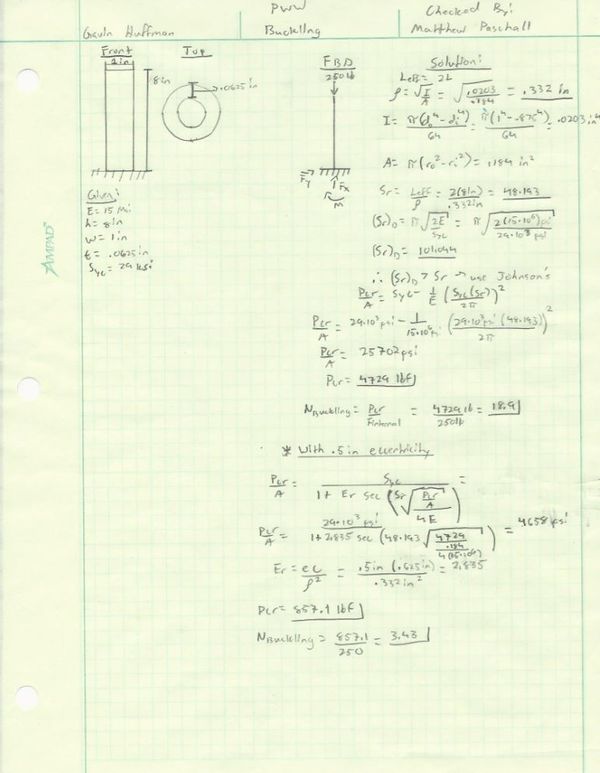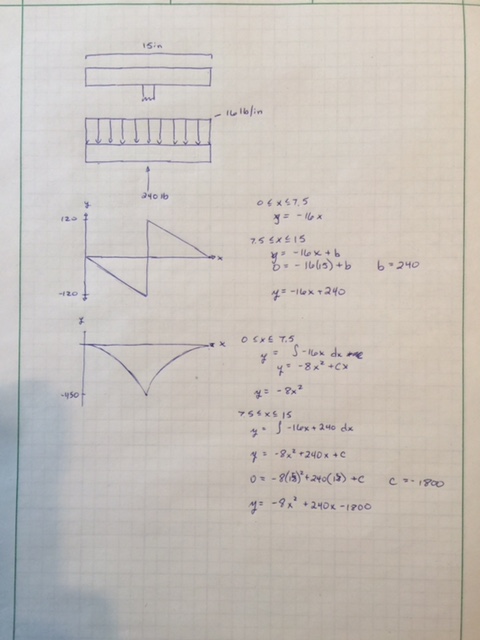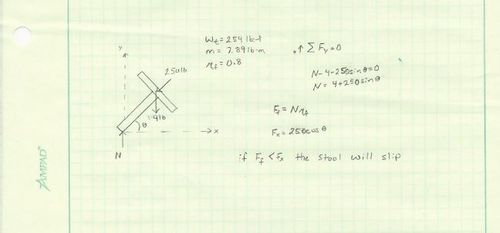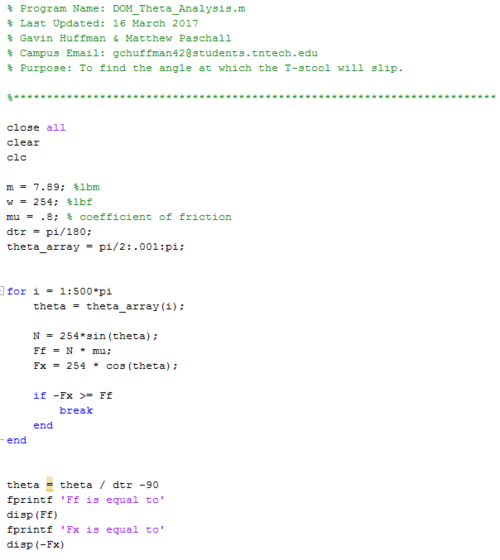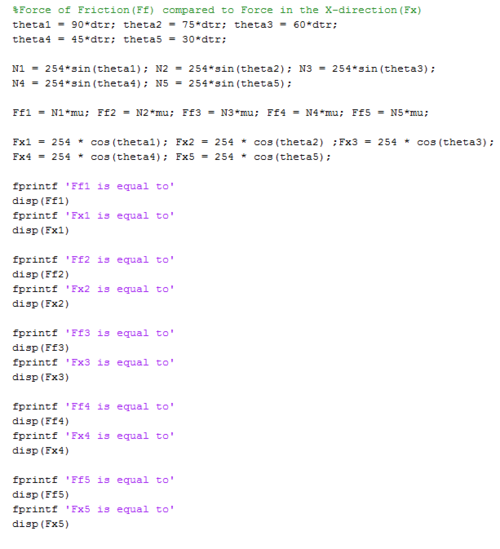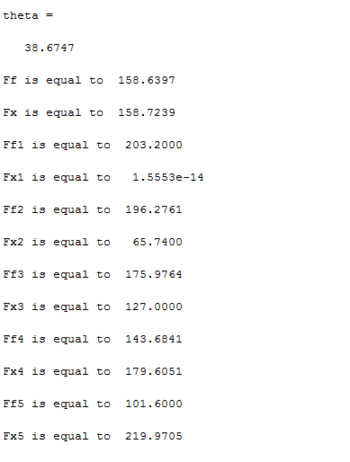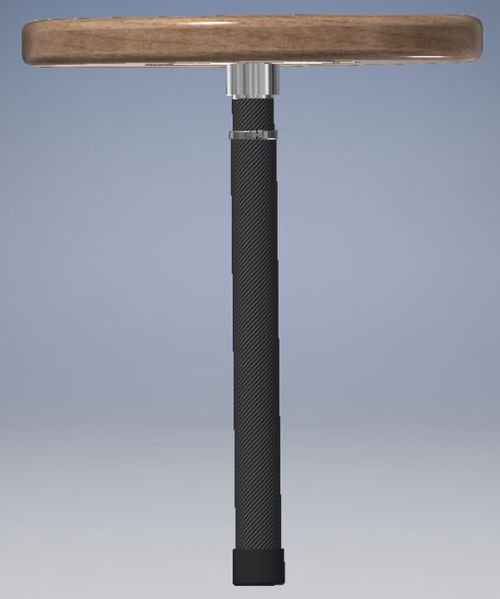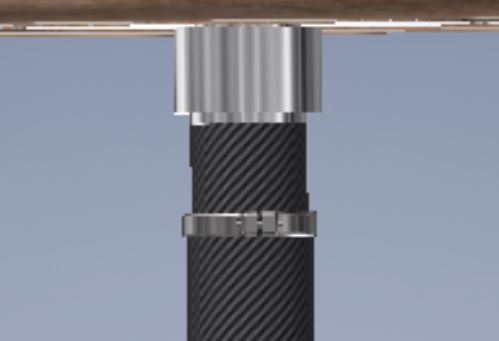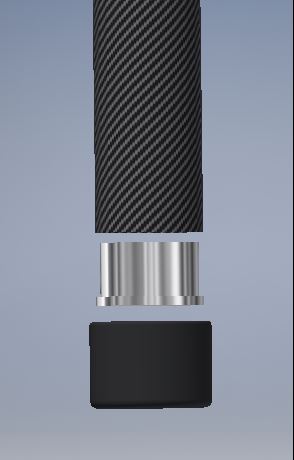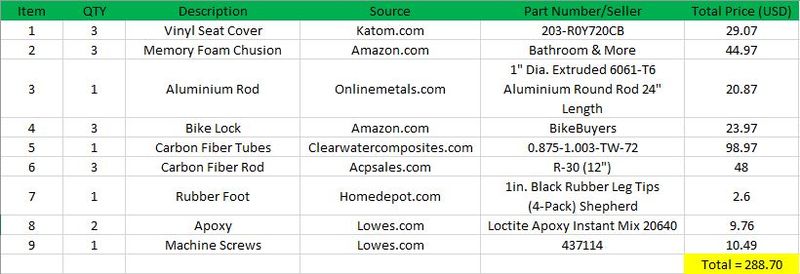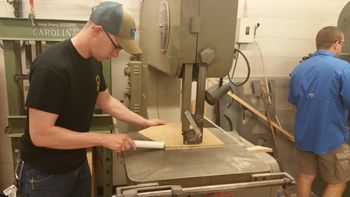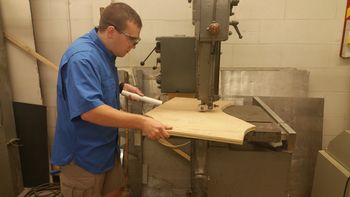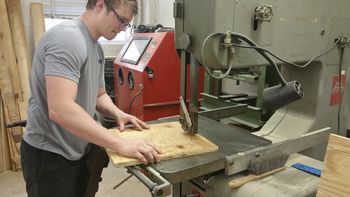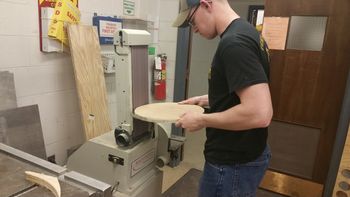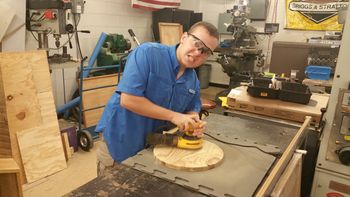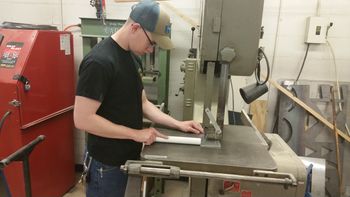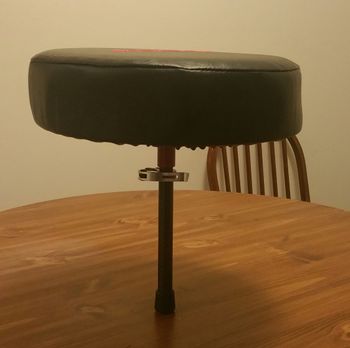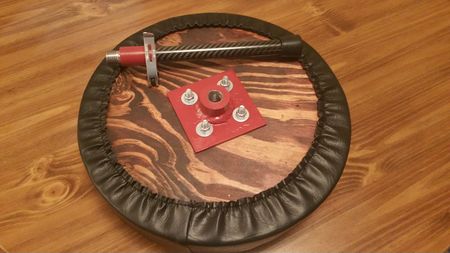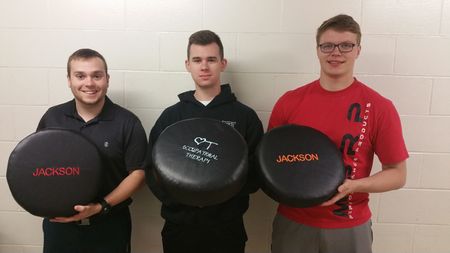Sensory Balance Chair
Abstract
The goal of this project is to design, develop, produce, and deliver a sensory balance chair to a therapist. We are creating a product in order to provide a way for children with Autism Spectrum Disorder (ASD) to increase sensory input through the act of balancing.
Team members
- Prestige World Wide - "Special Solutions for Special Needs"
- Members (In order of appearance):
- Dmitry Searle, Matthew Paschall, Alex King, Gavin Huffman
- Acknowledgements: Dr. Stephen Canfield
Problem Statement/overview of the need
The therapist we are working with has a child that has Autism Spectrum Disorder (ASD) and is nonverbal. The child receives stimulation through the act of balancing and does this by rocking back in chairs. Due to the stresses caused by leaning back on two legs, the chairs tend to break. The therapist stated that a T-Stool design would be the best option for the child. The family would like to have one at home and one to stay at school. The therapist also stated that she would like to have one in her office.
Design Specifications
- 1. Height adjustable with locking mechanism
- 2. Able to support up to 90 kg or 200lb
- 3. Transportable
- 4. Relatively inexpensive
- 5. Stability
- 6. Easily cleaned
Background research
- The T-Stool already exists, and is widely available. However, they are relatively expensive, and they do not provide sufficient height adjustability.
Conceptual Design
- Prestige Worldwide met with the therapist and showed her several products. She told us that she liked the T-Stool the best and told the group some basic design parameters. We showed the therapist several styles of T-Stools, and she told us the specific aspects she liked from each of the different designs.
Design Concept 1
- This design includes a rubber foot for stability, and a push button locking system for height adjustability. It also has a round top with a cushioned seat for comfort.
- This design meets both the height and weight requirements.
Design Concept 2
- This design is made to fold for ease of transport.
- The locking mechanism is similar to what is used on a bicycle seat.
Design Concept 3
- This T-Stool has a ball joint at the bottom for rotation and pivoting.
- It also has a composite wrapping for added strength.
Design Concept 4
- This stool features a carbon fiber wrap for added support.
- It also has a foam seat cushion and a bike locking mechanism for the adjustable height.
Evaluate concepts/select candidate
- The winning design was number four, the carbon fiber stool. This design came out with the most points because:
- 1.) Adjustabilty - It has a bicycle locking mechanism.
- 2.) Strength - It is made of carbon fiber.
- 3.) Portability - It is lightweight.
- 4.) Cost - Carbon fiber can be expensive.
- 5.) Safety - It has little risk of buckling and has a rubber grip attached to the base.
- 6.) Maintenance - The carbon fiber is very easy to clean and the bicycle locking mechanism requires little lubrication.
Detailed Design
Description of selected design
- The design that was chosen is a mesh of all of the conceptual designs, and it also includes some additions and alterations.
Detailed description of selected design
- The final design will have a vinyl seat cover with a gel or foam insert. The base of the seat will be made of oak. In order for the stool to be transportable there will be a screw that allows the shaft to connect to the seat; the screw will be made of stainless steel. The seat height will be adjustable by using a seat-post binder and clap as is on a bicycle. The shaft will be composed of carbon fiber tubing and will have a smaller diameter tube inside of a larger diameter tube. The last component of the design is that there will be a rubber foot placed at the base of the carbon fiber tube.
Analysis
- In order for the T-stool to be determined safe for use, Prestige World Wide has chosen to perform buckling, shear and moment, and slipping angle analysis's. These three evaluations will determine the serviceability of the most critical aspects of the design.
Engineering analysis 1
- This is a buckling analysis on the bottom carbon fiber tube. The buckling evaluation was selected due to the stool having a heavy force on top, and the stool does not need to collapse with someone sitting on it. The bottom tube was chosen for the analysis because it will be the first to buckle since it is hollow.
Engineering analysis 2
- This depicts the shear and moment diagrams for the seat section of the T-stool.
Engineering analysis 3
- This calculation came out to be about 39 degrees. The angle is in reference to 90 degrees, so the T-stool can be moved 39 degrees to each side.
CAD Drawings
Bill of Materials
Assembly Instructions
Assembly:
- 1.) To assemble the T-stool, screw the stand into the seat base.
- 2.) Then, using the seat clamp, adjust the post to the desired height.
Disassembly:
- 1.) To disassemble the T-stool, lower the post to the minimum height.
- 2.) Then unscrew the stand from the seat base and attach to the seat.
Fabrication Process
Testing and implementation
Describe testing, delivery, how used/received by the family
- To test the product, we had our heaviest member sit on it first to be sure that the T-Stool would hold up. We then had the same person move side to side to see if the stool would slip and withstand the side loads. The T-Stool was then adjusted to its highest height, and the same tests were repeated.
- The seat cover of the T-Stool can be removed and cleaned with soap and water. The stool can be adjusted the same way as a bike cycle seat. The stem of the T-Stool can be unscrewed and attached to the base of the seat by simply sliding it into the seat cover.
Photos of Completed design
Instructions for safe use
- Be sure that the seat clamp is tightly fastened to the seat post before use.
- Do not use if you weigh over 200 lbs.
- Do not use the device unless supervised by an adult that fully understands the safe use of this product.
Project Summary, Reflection
- This project helped us all realize the importance of giving back to the community. This experience provided us the opportunity and budget to benefit a child in need. It also gave us valuable experience working hands-on in the shop and coordinating with Jeff Randolph to achieve our end goal of a completed project. It was also a great chance to practice working in a team to accomplish a common goal. Our group feels that this project was well worth the time put in, and it should be continued for future DOM classes.

